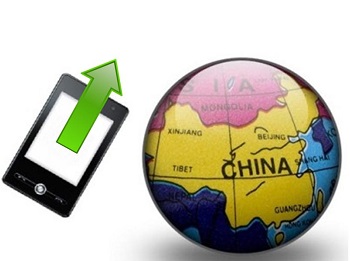Huawei partners with China UnionPay to expand access to Huawei Pay
Huawei Technologies, one of China’s largest manufacturers of mobile devices, will be expanding its mobile payments service in the country. This will place Huawei in direct competition with Apple, which recently brought its own payment service to China, as well as several other companies that have already established a strong lead in this market. The launch a new era of its service, Huawei has partnered with China UnionPay. Together, these organizations will offer a service called Huawei Pay.
Consumers showed favor for Huawei Pay during its testing phase
The payment service is not actually brand new. The service was first launched in September of last year on a pilot basis. It was only available for use in a limited number of stores and restaurants in China, but proved somewhat popular among consumers. Now, Huawei wants to expand the accessibility of this mobile payments service to more consumers, allowing them to make payments with their smartphones. China UnionPay will provide support for the service, allowing those with accounts with the bank to use Huawei Pay as they see fit.
Competition in China’s mobile commerce space is growing at a rapid rate
 China’s mobile commerce space is already intensely competitive. The space is occupied by Alibaba, which is one of China’s largest e-commerce groups. The company currently holds a 70% market share in China’s mobile payments market. Tencent, another major Internet company in the country, holds a 19% market share in this market. Other companies are coming to China to find success in the growing mobile commerce market, but they may find very limited success due to the strong competition that exists within this space.
China’s mobile commerce space is already intensely competitive. The space is occupied by Alibaba, which is one of China’s largest e-commerce groups. The company currently holds a 70% market share in China’s mobile payments market. Tencent, another major Internet company in the country, holds a 19% market share in this market. Other companies are coming to China to find success in the growing mobile commerce market, but they may find very limited success due to the strong competition that exists within this space.
Consumers want secure mobile commerce solutions
Consumers see mobile payments as a convenient service, but many are still worried about the security of their personal information, which is why they avoid new payment services. Huawei Pay aims to allay consumer concerns with new security features. All transactions made through the service must be verified with a fingerprint scan, which will help protect consumer information from exploitation.
Companies from Bloomingdale’s to Lowe’s are going in odd directions to try to grab the attention of younger shoppers.
Being able to attract the attention of shoppers in the Millennial generation and then actually engage them can be exceptionally challenging, forcing retailers to use mobile marketing in some rather strange ways in order to stand out.
These companies are discovering that smartphone ads aren’t necessarily about a message or a look.
Instead, mobile marketing success is all about relevance. Retailers have tried virtually everything in order to share a popular message or create an amazing look in their mobile ads. However, it’s not until they truly answer the question “what’s in it for me, personally?” that they appeal to the younger shopping generation. Shoppers need a solid reason to pay attention to a message and then to interact with it. Often, the most effective way to do this is through positivity and even humor.
All too frequently, mobile marketing comes across as something forced and constructed deliberately for popularity.
 When an advertising effort is too transparent as an effort to become something viral, the outcome feels awkward to the viewer and becomes ineffective. However, occasionally, it all comes together and the result can be highly effective. That is the moment that retailers would do just about anything to achieve; to be able to reach those young shoppers and successfully encourage them to act on the call to action.
When an advertising effort is too transparent as an effort to become something viral, the outcome feels awkward to the viewer and becomes ineffective. However, occasionally, it all comes together and the result can be highly effective. That is the moment that retailers would do just about anything to achieve; to be able to reach those young shoppers and successfully encourage them to act on the call to action.
Two retailers who have been using mobile advertising to reach out to the Millennial generation include Bloomingdales and Lowe’s. The way in which they have been engaging their target markets are extremely unique and very different from each other, while being highly effective.
Lowe’s is seeking to become the top resource for first-time home and apartment owners and came up with a campaign featuring some typical types of commercials, but what made it stand out is that each commercial was recorded in the same way while coming to a different ending. To complete the story, viewers must check it out at Lowes.com. Bloomingdales, on the other hand has fashion in mind and has come up with the Bloomoticon series of 64 emoticon-like images as their mobile marketing. Shoppers can then use those tiny images in order to send out social messages.
 China’s mobile commerce space is already intensely competitive. The space is occupied by Alibaba, which is one of China’s largest e-commerce groups. The company currently holds a 70% market share in China’s mobile payments market. Tencent, another major Internet company in the country, holds a 19% market share in this market. Other companies are coming to China to find success in the growing mobile commerce market, but they may find very limited success due to the strong competition that exists within this space.
China’s mobile commerce space is already intensely competitive. The space is occupied by Alibaba, which is one of China’s largest e-commerce groups. The company currently holds a 70% market share in China’s mobile payments market. Tencent, another major Internet company in the country, holds a 19% market share in this market. Other companies are coming to China to find success in the growing mobile commerce market, but they may find very limited success due to the strong competition that exists within this space.
 When an advertising effort is too transparent as an effort to become something viral, the outcome feels awkward to the viewer and becomes ineffective. However, occasionally, it all comes together and the result can be highly effective. That is the moment that retailers would do just about anything to achieve; to be able to reach those young shoppers and successfully encourage them to act on the call to action.
When an advertising effort is too transparent as an effort to become something viral, the outcome feels awkward to the viewer and becomes ineffective. However, occasionally, it all comes together and the result can be highly effective. That is the moment that retailers would do just about anything to achieve; to be able to reach those young shoppers and successfully encourage them to act on the call to action.